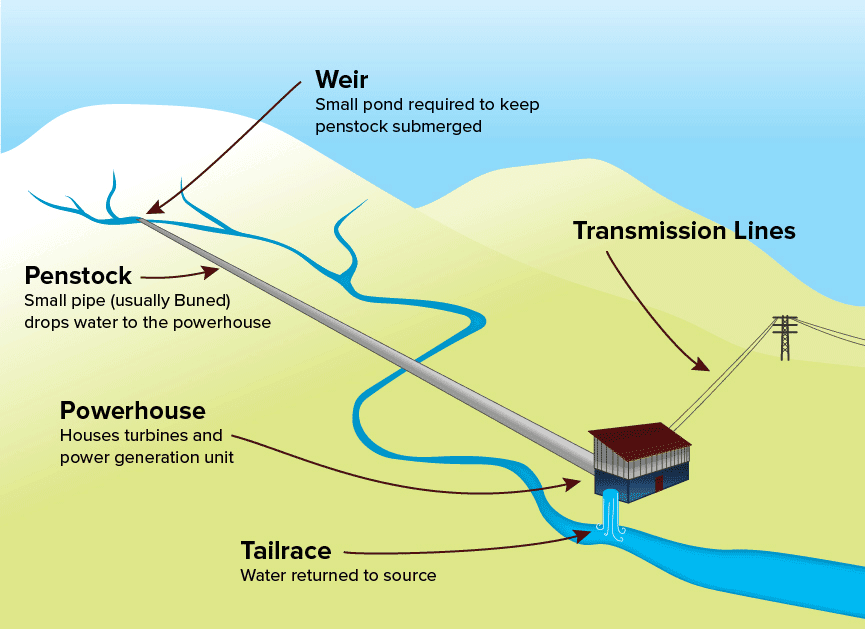Not all hydropower plants have to be big, some are small enough to be used in small rivers. The small hydropower plants are this post’s subject.
Differences between big and small plants
The working principle is the same of the big plants, you can see how it works clicking in the button below.
In addition to the size, the small hydropower plants can be used in isolated areas, causes a smaller environmental impact and has a cheaper construction. By the other side, depending on climate, the small plant may not generate the entire year due the drought. The definition of small hydropower plant depends on the legislation of each country.
Operation by run-of-river
The small hydropower plants don’t have great dams and operate by run-of-river. This type of operation simply divert a part of river’s water in higher ground with a penstock, the water rotates the turbine and returns to the river.

Every generator is linked to a gear set to increase the speed and produce more energy. The used turbine depends on the flow and the water’s height. Exist two types of turbines: impulse (Pelton and Banki) and reaction (Francis and Kaplan). The Pelton turbine remembers the old water wheel, it is good for low flow and high elevation.

The Banki turbine or cross-flow, it is used to lower elevations than the Pelton and with a water flow equal or higher, this turbine isn`t very known because it used more other types to the same situations.

I already talked about the Francis turbine in the post about hydropower plants, click in the button in the beginning of the post. The Kaplan turbine is good for low height and high flow, reminds a propeller.

This graphic shows which turbine use considering the water flow (horizontal axis) and water height (vertical axis).

Other examples of small plants
Some plants use an Archimedes screw instead a turbine to generate energy.

The Turbulent company is developing new small plants which form a whirlwind. Can be used in many rivers and canals and generate energy 24 hours per day.

 Hydropower plantClick here
Hydropower plantClick here

